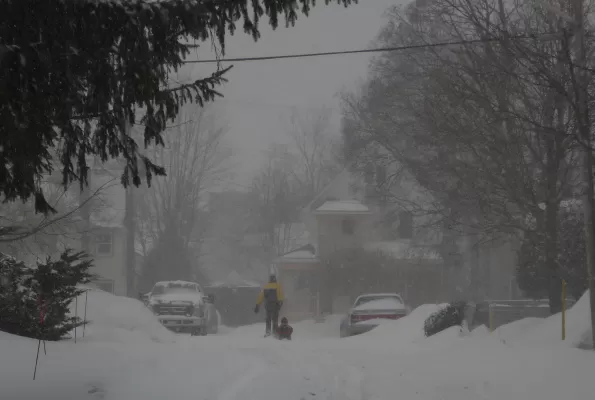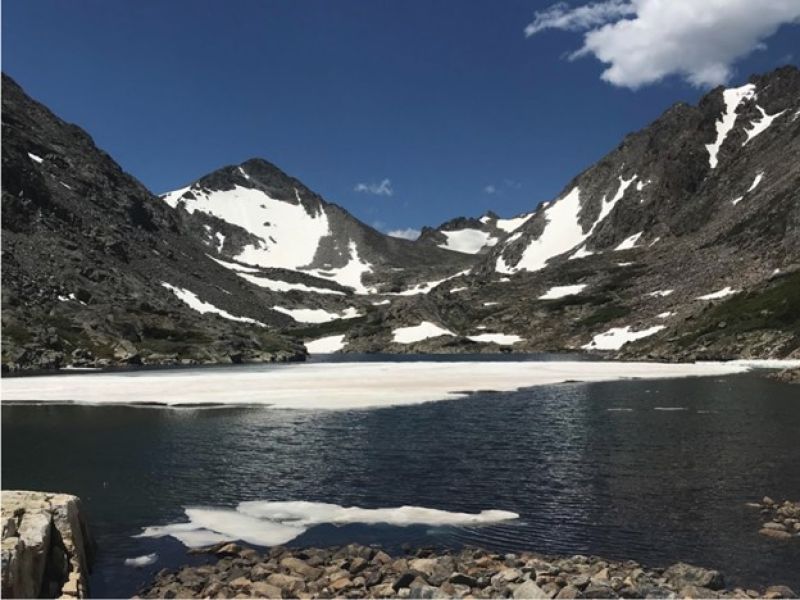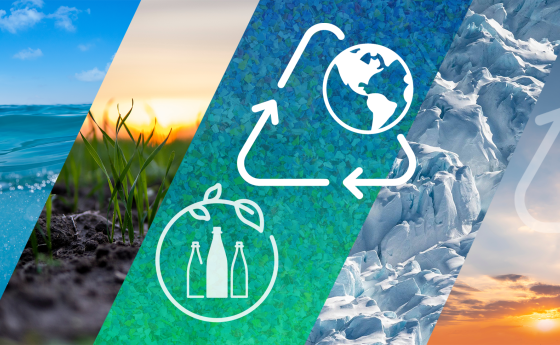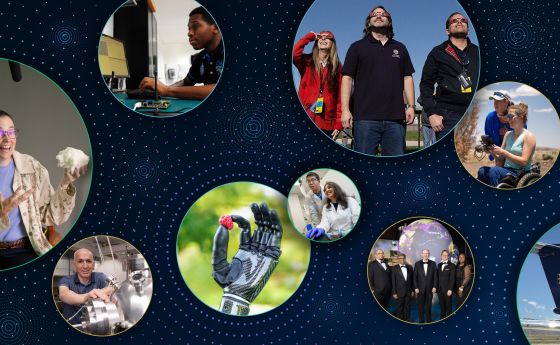
NSF-driven research finding shifts in typical weather patterns
Charles Dudley Warner quoted an American writer — possibly his friend, Mark Twain — in an 1897 editorial. "While everybody talked about the weather, nobody seemed to do anything about it." Around 125 years later, research driven by the U.S. National Science Foundation is identifying shifts in expected weather patterns.
The NSF's Division of Atmospheric and Geospace Sciences, part of the Directorate for Geosciences, supports research on physical and dynamic meteorology, including the study of winter storms. The work under their programs is finding changes in expected snowfall amounts, the intensity of storms and average temperatures as well as shifts in the expected timing of cold or freezing weather and other impacts.
In some of the northern areas of the country, research is finding that a warmer climate is contributing to bigger snowstorms. Warmer air can hold more moisture than colder air, but if temperatures rise but still remain below the freezing point, more snow can be the result.
But in other regions, the amount of snowfall has decreased. For example, in the western U.S., a shrinking of the period when snow falls and declining snowfall rates are curtailing the winter sports industry and taking a bite out of the economy that powers many towns. In addition, NSF studies have identified that animals who depend on snow in these areas may have a harder time surviving if the climate continues to warm.
Shorter, less frequent snowstorms
In 2020, an NSF study led by researchers from Northern Illinois University, or NIU, found that winters in the U.S. could see significant decreases in the frequency, intensity and size of snowstorms. The researchers used a supercomputing data set to study how climate change will impact future wintry weather. The study projects 28% fewer snowstorms on average per year over central and eastern portions of North America by the 2090s, with a 33% reduction in the amount of snow or frozen precipitation and a 38% loss in average snowstorm size.
"The snow season will start later and end earlier," said Walker Ashley, an NIU meteorologist and lead author of the study, published in Nature Climate Change. "Generally, what we consider an abnormally mild winter now, in terms of the number and intensity of snowstorms, will be the harshest of winters late this century. There will be fewer snowstorms, less overall precipitation that falls as snow and almost a complete removal of snow events in the southern tier of the United States."
Climate impacts can also be felt where snow is not the dominant precipitation during the winter months. A study by researchers affiliated with the NSF's Niwot Ridge Long-Term Ecological Research site reported a 24-day decrease in lake ice cover duration in Green Lakes Valley, Colorado, since 1983 due to earlier spring thaw dates and later autumn freeze dates.
Mountain lakes provide freshwater for roughly half the world's population, and a shifting climate could impact the reliability of this resource by altering the temperature patterns that govern lake conditions and influence lake biota.
Longer allergy season
And as climate change affects the length of winter and the timing and amount of snowfall, it could also make allergy season longer and more intense. Hotter temperatures can increase the amount of pollen produced by grasses, weeds and trees and can make it airborne even earlier. Researchers at the University of Michigan developed a model that examines 15 of the most common pollen types and predicts how their production will be impacted by projected changes in temperatures and precipitation.
They believe that by the end of this century, Spring pollen emissions could begin 40 days earlier, and the annual amount of pollen emitted could increase up to 200% each year. This is bad news for allergy sufferers, who could experience an additional 19 days before high pollen counts subside.
A flurry of scientific activity for a better future
What will the winter of the future look like? Researchers continue to search for the answer using a variety of scientific techniques and technology. In all regions of the country, NSF-funded researchers are studying the shifts in winter weather, what is driving these changes and the impacts they will have on regional environments and economies. This work can lead to improvements in forecasting, emergency preparedness and water management practices helpful to communities and economies in a changing climate.







